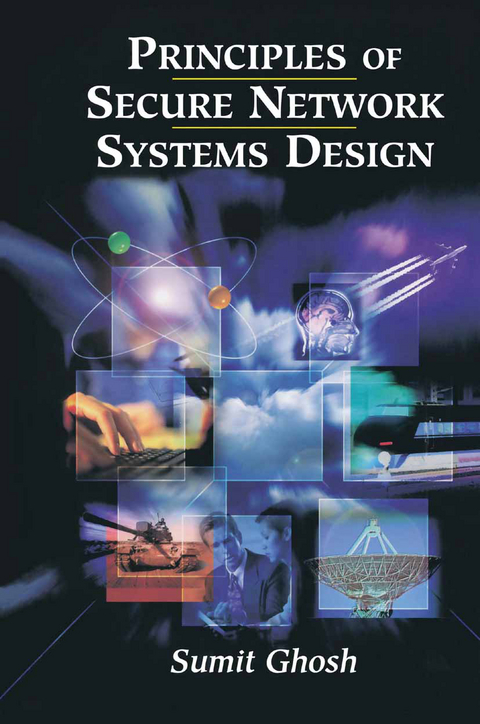
Principles of Secure Network Systems Design
Springer-Verlag New York Inc.
9780387952130 (ISBN)
As e-commerce becomes the norm of business transactions and information be comes an essential commodity, it is vital that extensive efforts be made to examine and rectify the problems with the underlying architectures, processes, methods, that are involved in providing and and tools, as well as organizational structures, utilizing services relating to information technology. Such a holistic view of the relevant structures is required in order to identify all of the key aspects that can affect network security. Unfortunately, today's systems and practices, although they have proved to be useful and become widespread, contain significant unnecessary complexity. This complexity provides many loopholes that make systems and practices vulnerable to malicious attacks by hackers as well as by individual and organized criminals. FUrther, there are enormous risks due to malfunction of the systems. The holes in the network system cannot simply be plugged up by the use of cryptography and firewalls. While many changes need to be made in operating systems and system software with respect to security, this alone does not solve the problem. The problems cannot be solved by addressing only a single key aspect of network security. A holistic approach is required. Sumit Ghosh has provided in this book such a holistic view of the area of network security. Thus, it is a most welcome contribution.
1 Evolution of Network Security and Lessons Learned from History.- 1.1 Introduction.- 1.2 History of Security and Its Influence on Information Networks.- 1.3 Lessons Learned from History.- 1.4 Growing Interest in Network Security.- 1.5 Origin and Nature of Security in Networks.- 1.6 Principal Characteristics of Network Security.- 1.7 Secure Network Designs Through Modeling and Simulation.- 1.8 Problems and Exercises.- 2 A Fundamental Framework for Network Security.- 2.1 Introduction.- 2.2 The Changing Paradigm of Network Security.- 2.3 Review of the Literature on Network Security.- 2.4 The National Security Agency’s Network Rating Model (NRM).- 2.5 A Fundamental Framework for Network Security.- 2.6 Uses of the Fundamental Framework for Network Security.- 2.7 Problems and Exercises.- 3 User-Level Security on Demand in ATM Networks: A New Paradigm.- 3.1 Review of the Literature on Security in ATM Networks.- 3.2 The Need for User-Level Security on Demand.- 3.3 Security on Demand in ATM Networks.- 3.4 Problems and Exercises.- 4 The Concept of Node Status Indicator (NSI) and Performance Analysis.- 4.1 Introduction.- 4.2 The Concept of Node Status Indicator (NSI): Refinind Distributed Resource Allocation.- 4.3 Modeling Security on Demand for a Representative ATM Network and Implementation Issues.- 4.4 Synthesis of the Input Traffic for Network Performance Analysis Under Security on Demand.- 4.5 The Design of Experiments, Simulation Results, and Performance Analysis.- 4.6 Problems and Exercises.- 5 “Mixed-Use” Network.- 5.1 Introduction.- 5.2 Mixed-use Networks: Integrating the Military’s Secure ATM Networks with the Public ATM Infrastructure.- 5.3 Modeling and Distributed Simulation of the Representative ATM Networks.- 5.4 Call Setup in a Mixed-Use ATM Network.- 5.5Modeling the Represent ative ATM Networks.- 5.6 Simulation Experiments and Performance Analysis.- 5.7 Problems and Exercises.- 6 Synthesis of Security Attack Models for ATM Networks.- 6.1 Brief Review of the Current Literature on Attack Models.- 6.2 Fundamental Characteristics of ATM Networks.- 6.3 Synthesis of Security Attack Models for ATM Networks.- 6.4 Modeling, Simulation, and Behavior Analysis of Security Attack Models.- 6.5 Problems and Exercises.- 7 Complex Vulnerabilities and Highly Sophisticated Attacks.- 7.1 Influence of Source Traffic Distribution on Quality of Service.- 7.2 Susceptability of the Traditional ATM Output Buffer Architecture to UNI-Compliant Traffic.- 7.3 Problems and Exercises.- 8 Future Issues in Information Systems Security.- References.
| Vorwort | H. Lawson |
|---|---|
| Zusatzinfo | XXVI, 209 p. |
| Verlagsort | New York, NY |
| Sprache | englisch |
| Maße | 155 x 235 mm |
| Themenwelt | Informatik ► Netzwerke ► Sicherheit / Firewall |
| Informatik ► Theorie / Studium ► Kryptologie | |
| Mathematik / Informatik ► Mathematik ► Analysis | |
| Mathematik / Informatik ► Mathematik ► Wahrscheinlichkeit / Kombinatorik | |
| ISBN-13 | 9780387952130 / 9780387952130 |
| Zustand | Neuware |
| Informationen gemäß Produktsicherheitsverordnung (GPSR) | |
| Haben Sie eine Frage zum Produkt? |
aus dem Bereich


